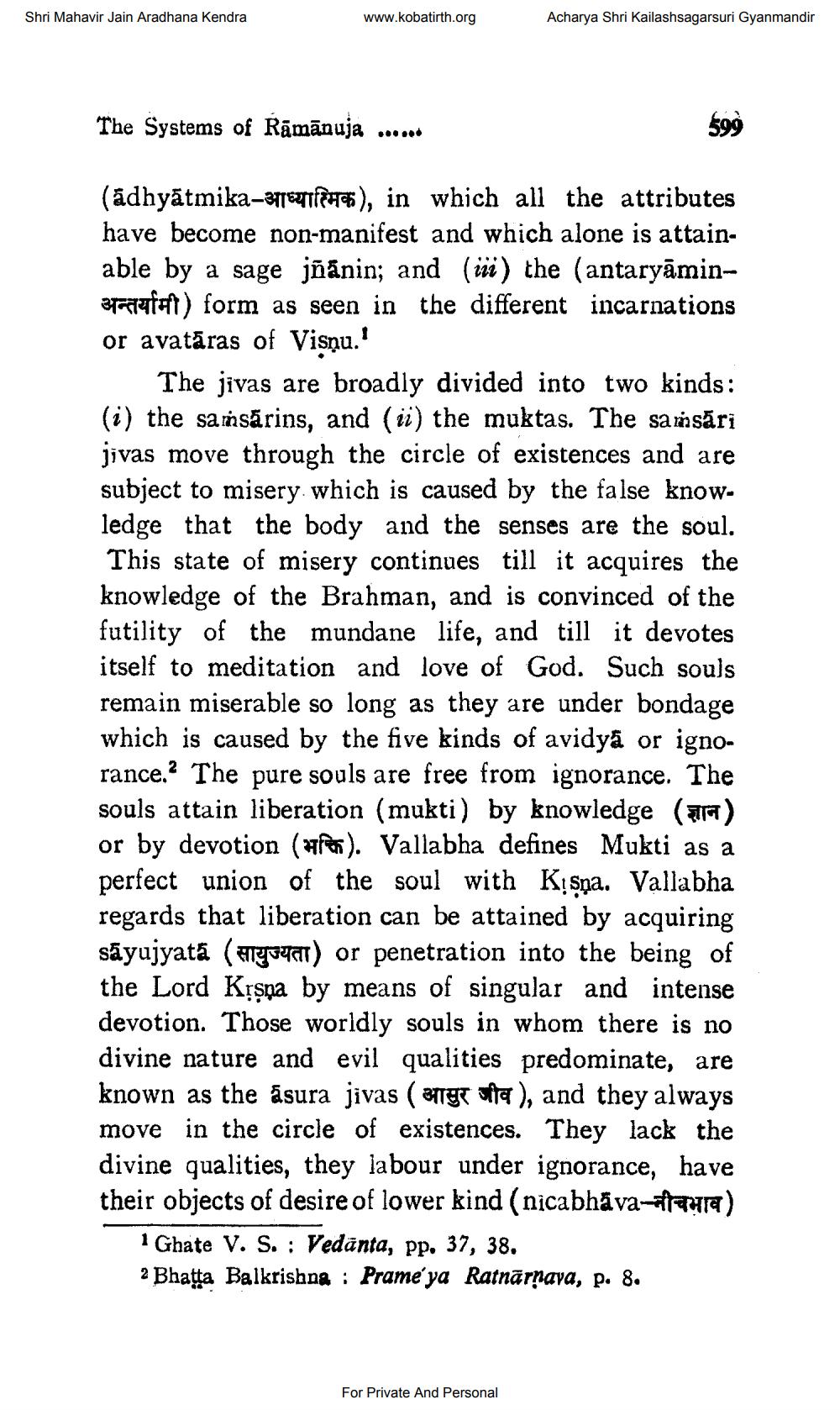________________
Shri Mahavir Jain Aradhana Kendra
www.kobatirth.org
Acharya Shri Kailashsagarsuri Gyanmandir
The Systems of Rāmānuja ......
599
(adhyātmika-37751ff7%), in which all the attributes have become non-manifest and which alone is attainable by a sage jñānin; and (iii) the (antaryāmin37agufaft) form as seen in the different incarnations or avatāras of Visņu.'
The jivas are broadly divided into two kinds: (i) the samsārins, and (ii) the muktas. The samsāri jivas move through the circle of existences and are subject to misery which is caused by the false knowledge that the body and the senses are the soul.
This state of misery continues till it acquires the knowledge of the Brahman, and is convinced of the futility of the mundane life, and till it devotes itself to meditation and love of God. Such souls remain miserable so long as they are under bondage which is caused by the five kinds of avidyä or ignorance.? The pure souls are free from ignorance. The souls attain liberation (mukti) by knowledge (ra) or by devotion (Hi). Vallabha defines Mukti as a perfect union of the soul with Kişņa. Vallabha regards that liberation can be attained by acquiring sāyujyatā (HFUAT) or penetration into the being of the Lord Krşņa by means of singular and intense devotion. Those worldly souls in whom there is no divine nature and evil qualities predominate, are known as the āsura jivas (angt ofta ), and they always move in the circle of existences. They lack the divine qualities, they labour under ignorance, have their objects of desire of lower kind (nicabhävaara)
i Ghate V. S. : Vedānta, pp. 37, 38. 2 Bhata Balkrishna : Prame'ya Ratnārnava, p. 8.
For Private And Personal




